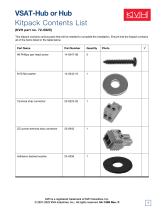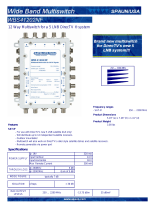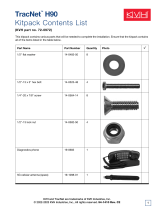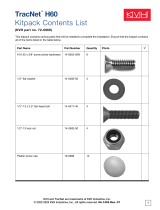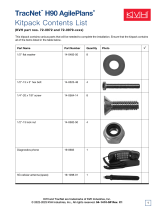1-2
1.2.1 TracVision L2 Components
The antenna unit includes the antenna positioning mechanism,
signal front end, power supply and control elements. These
elements include antenna drive controls and mechanisms, the
cable wrap subassembly, antenna gyro sensor, power
conditioning and regulating circuits, and the RF detector. The
antenna is a parabolic dish mounting a dual-output low noise
block (LNB) converter with built-in preamplifier. A molded ABS
radome encloses the baseplate and is secured in place with
standard fasteners. Connectors on the back of the baseplate join
the power, signal, and control cabling from units inside the
vehicle.
1.2.2 Integrated Receiver/Decoder (IRD)
The IRD (purchased separately) receives satellite signals from the
antenna unit for signal decoding, processing, and channel
selection, and sends the signals to the TV set for viewing. In
addition, messages can be sent from the IRD to the antenna unit
and messages can be received from the antenna unit for display
on the television screen. The IRD also provides the interface for
the user to activate authorization for reception. Please refer to the
User’s Manual provided with your selected IRD for complete
operating instructions.
1.3 Materials Provided with
TracVision L2
Table 1-1 lists the units, cables, and materials packed in the
TracVision L2 package by name and KVH part number.
Component KVH Part No.
Antenna Unit 01-0225-16
RF Cable (28 ft) 32-0417-28
Data/Power Cable (28 ft) 32-0730-28
IRD Ground Wire (50 ft) 32-0583-50
Kitpack* 72-0125
Installation and Operation Manual 54-0195
* A complete listing of kitpack contents is provided in Table 2-2.
A Guide to TracVision L2
On-screen messages are not
available with a DISH Network IRD.
Table 1-1
TracVision L2 Packing List
Cables for the TracVision L2 are
stored beneath the antenna unit
during shipping.
Before you can start watching
satellite TV using your TracVision
antenna, you will need to activate
your IRD. Refer to Section 2.4,
“Activating the IRD,” for more
details.




















